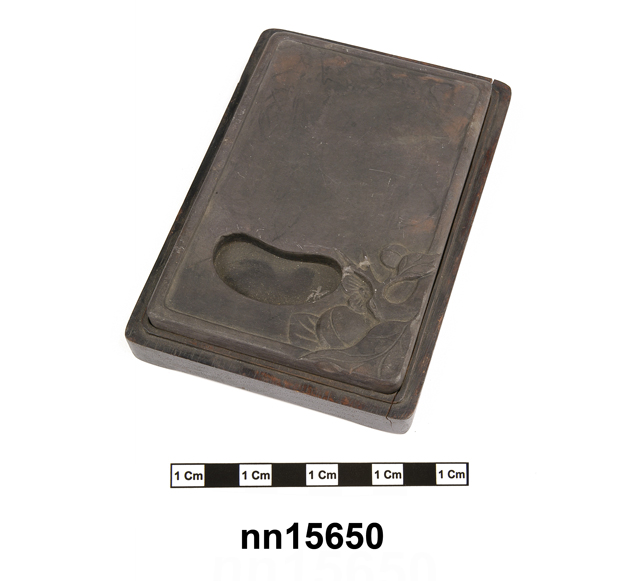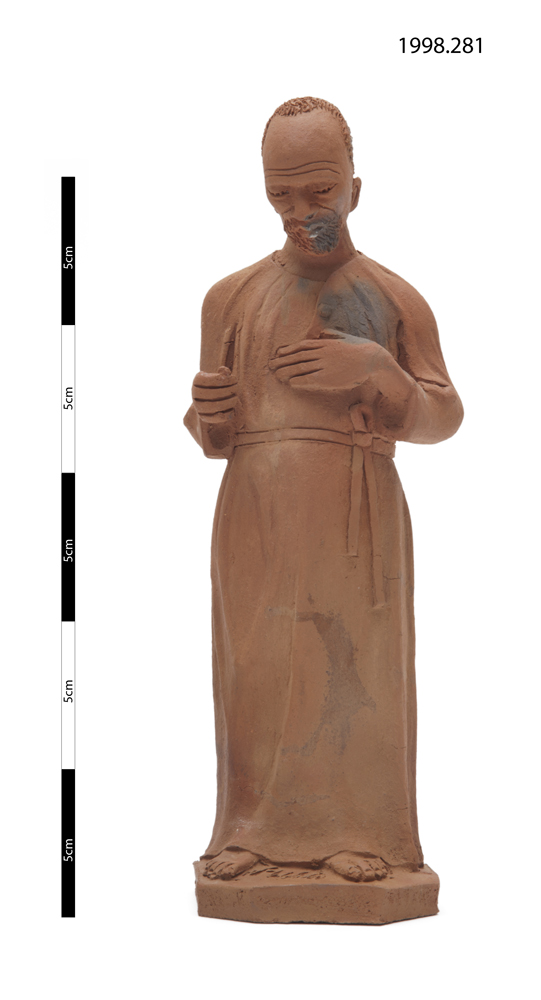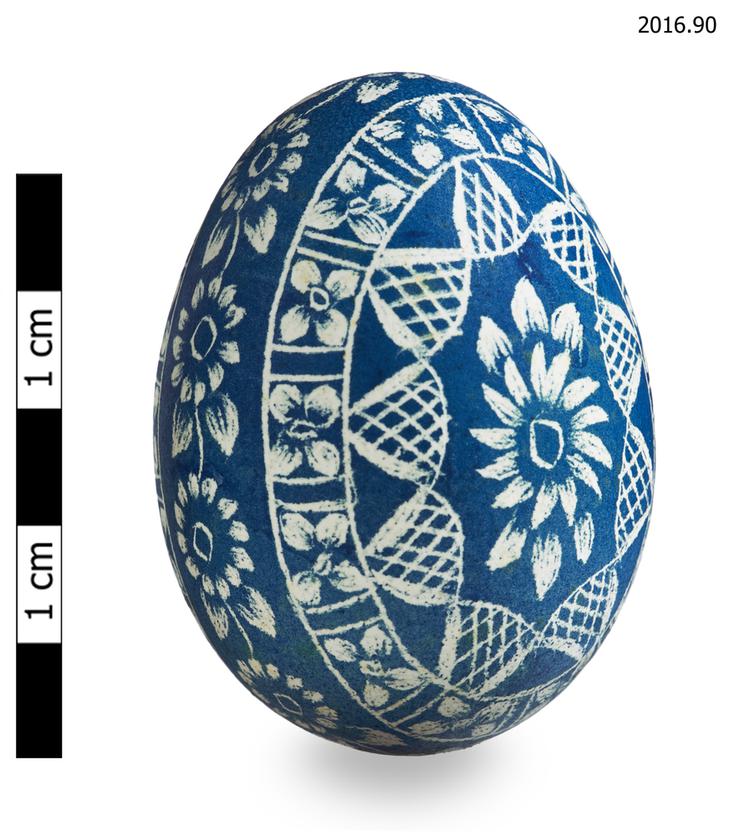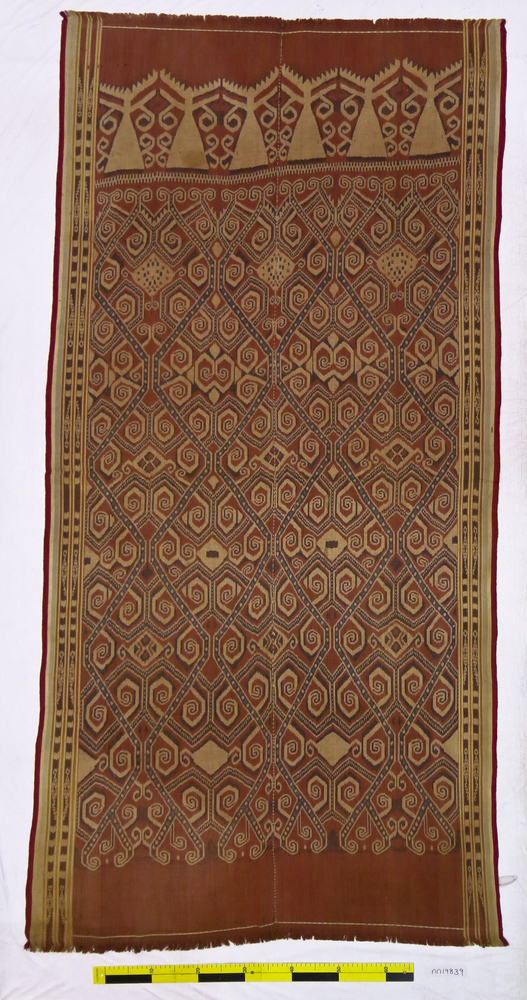
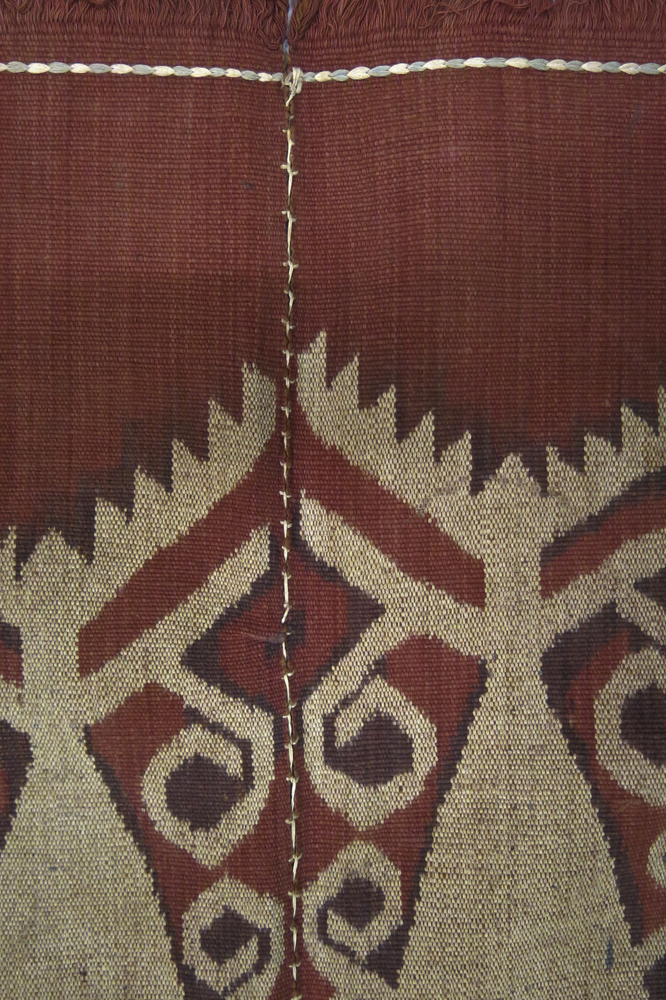
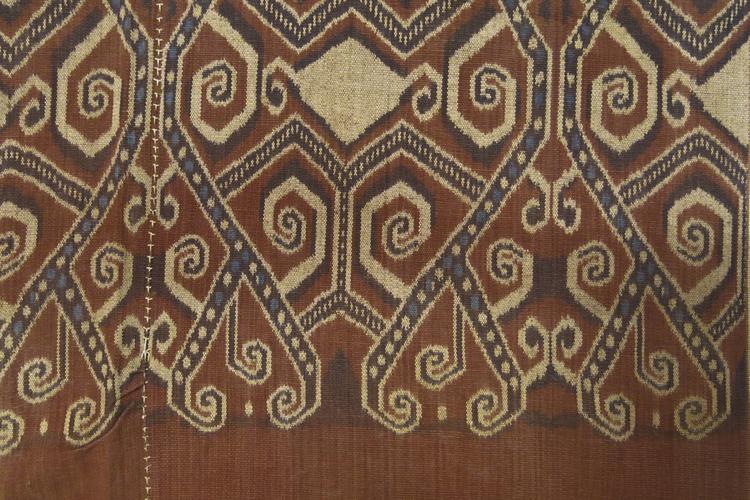
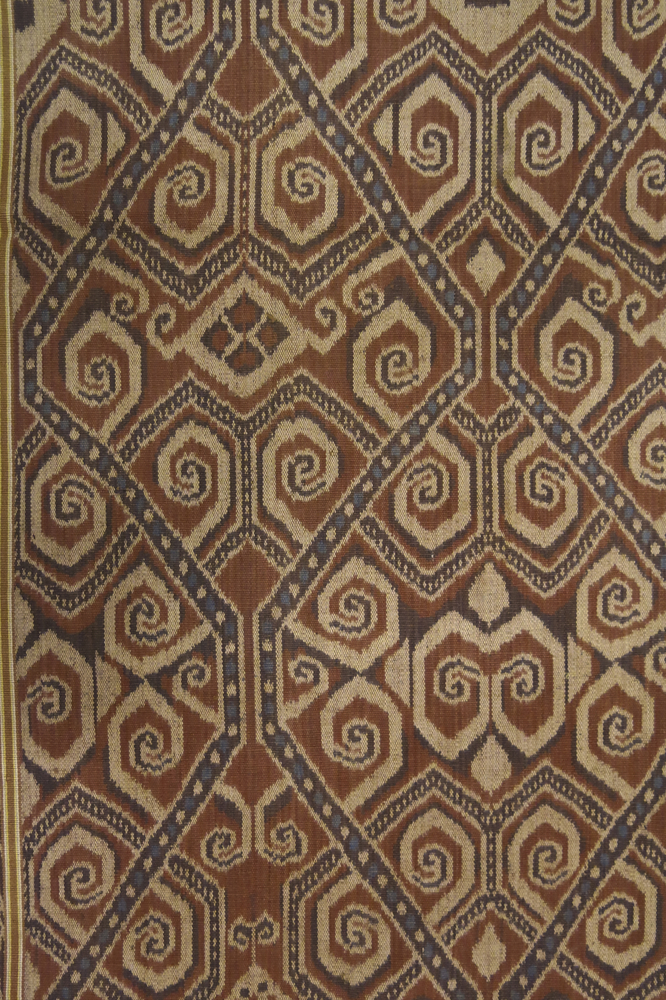
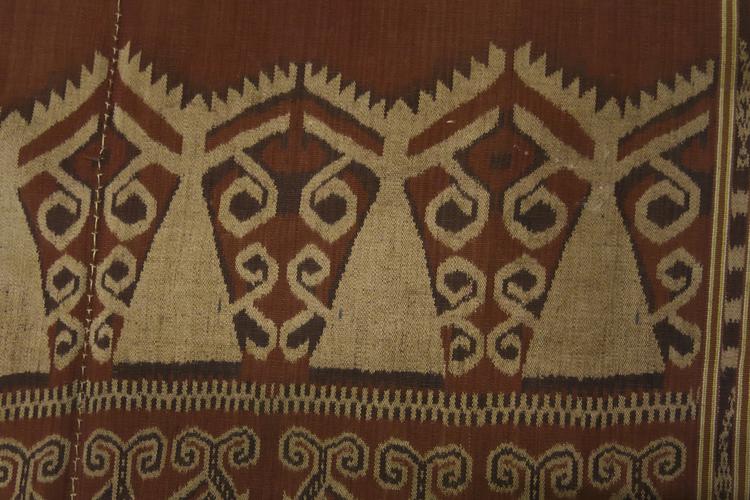
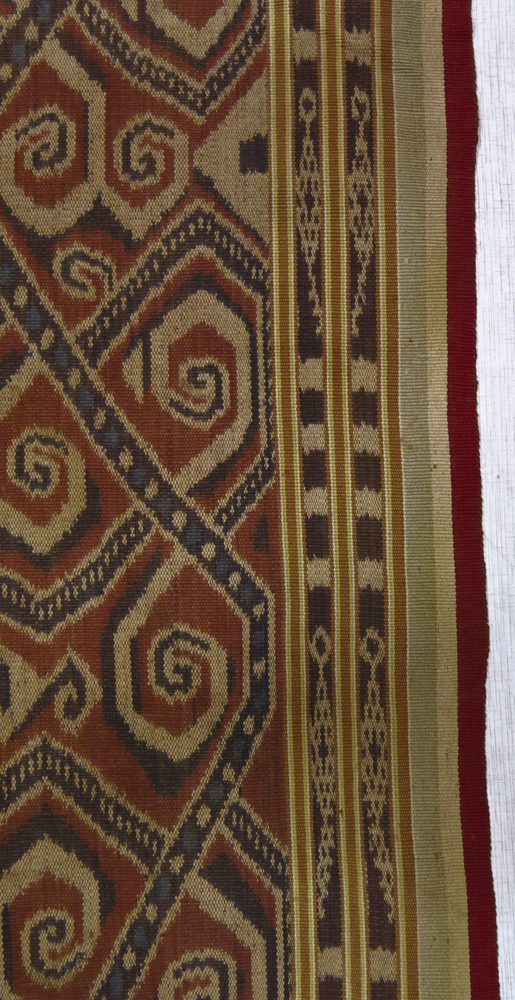
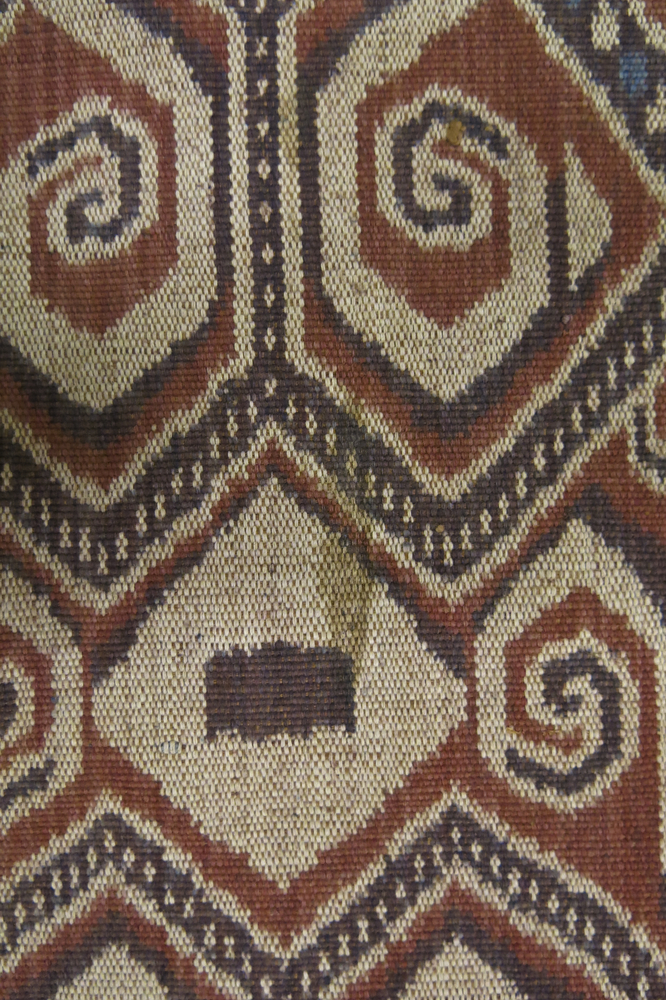


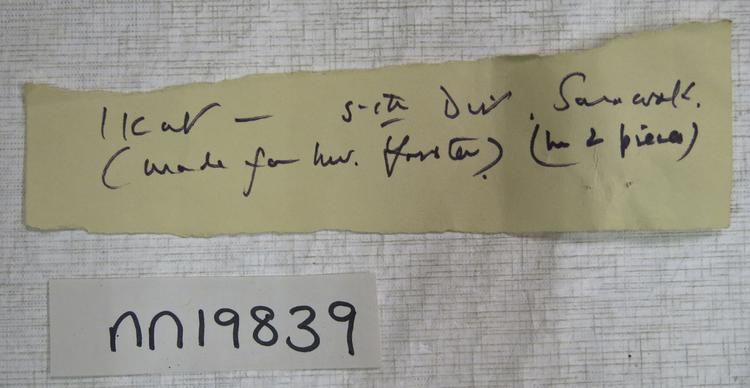
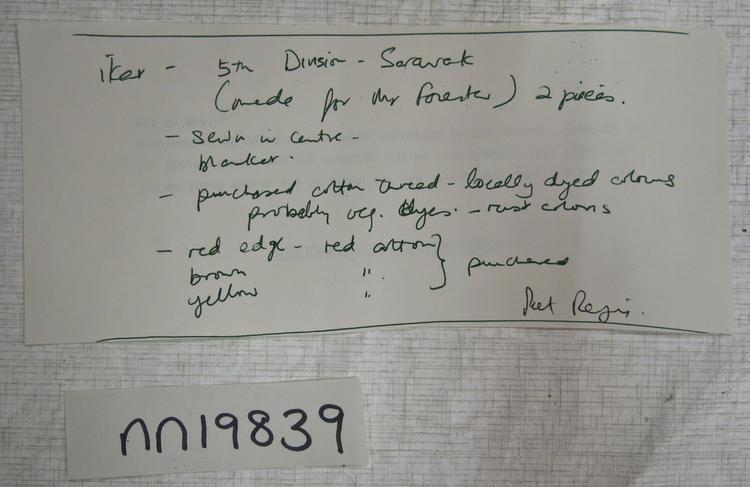
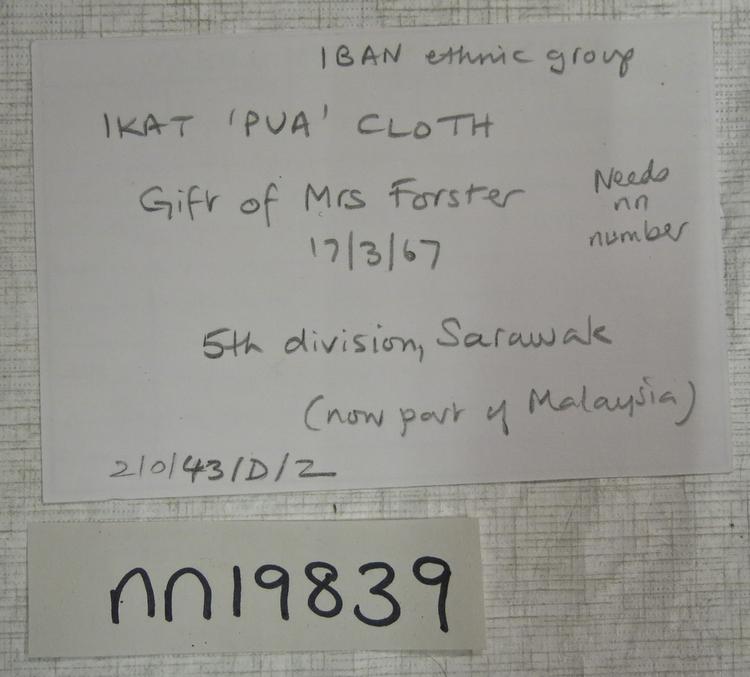
Patterned ikat 'pua' cloth, with fringed edges. The cloth is woven, and was made in two pieces that have been sewn together down the centre. The outer edge is bright red, with an inner border of cream, orange, and mottled brown and cream stripes. The centre of the cloth has a pattern of spirals in cream on a red ground, which are divided into diamond-shaped sections bordered by a brown stripe with cream and blue dots.




